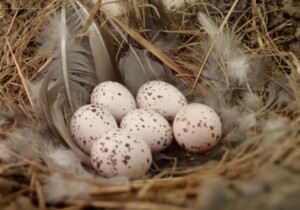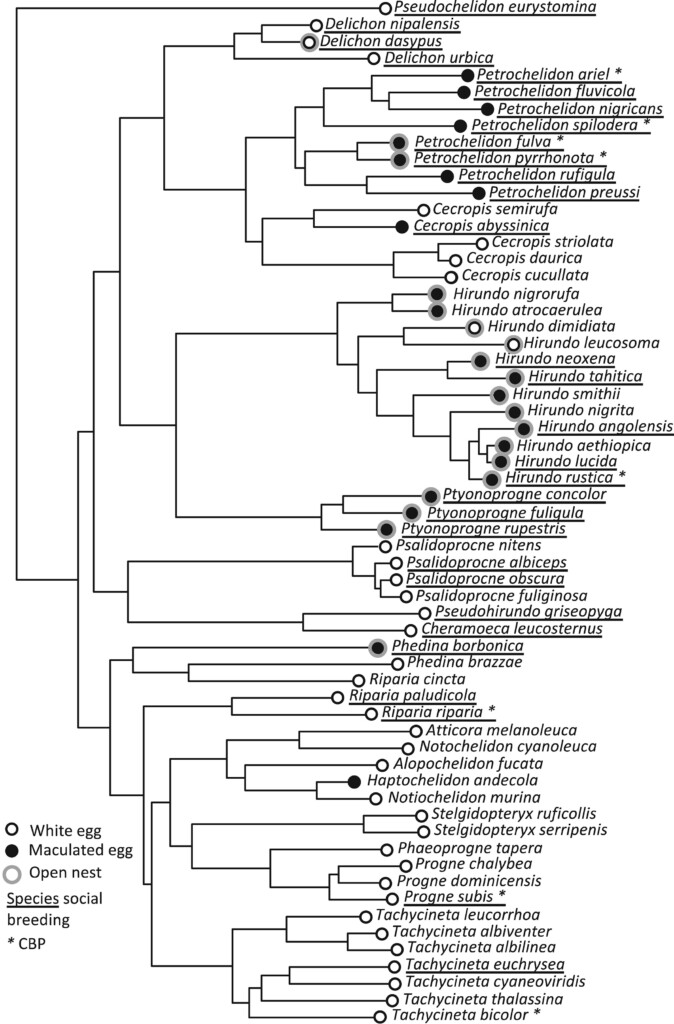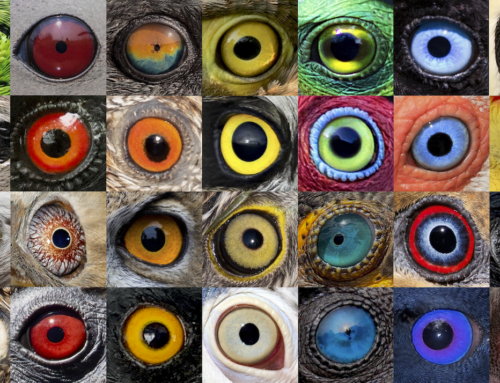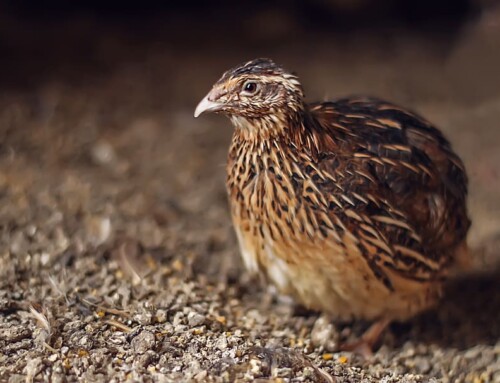
LINKED PAPER
Correlated evolution of eggshell maculation with social breeding and nest type in Hirundinidae. Levin, I. I., Kaufman, S. L., Knaysi, S. E., & Rataezyk, O. G. 2023. IBIS. DOI: 10.1111/ibi.13118. VIEW
Why are some bird eggs maculated (patterned) and others immaculate (non-patterned)? Studies across different species have provided evidence for various functions of maculation including crypsis (camouflage), structural support, mimicry, egg or clutch recognition, and signalling (Underwood & Sealy 2002). It has been suggested that avian eggs are therefore subject to a hierarchy of selective forces which have contributed to their vast phenotypic diversity (Kilner 2006), but there is a lack of consensus on which factors play the biggest role.
A recent study in Ibis examined the correlation between eggshell maculation, social breeding, and nest type in Hirundinidae (swallows and martins) to test for correlated evolution between these traits.
A possible identity signal
Iris I. Levin and colleagues analysed 61 species of Hirundinidae for which they had information on social breeding (social vs. solitary), eggshell maculation (maculated vs. immaculate), and nest type (open cup vs. closed/cavity nest). Instances of conspecific brood parasitism (CBP) had also been reported for eight of the species, although as this behaviour is often challenging to detect it may also occur in others. The diversity of this group in terms of maculation and breeding biology presented an opportunity to investigate if eggshell patterns might act as an identity signal allowing for egg or clutch recognition when birds nest in dense colonies and/or face inter- or intraspecific brood parasitism.

Figure 1. Phylogenetic tree of Hirundinidae including all species with data on eggshell maculation (maculated or immaculate), breeding biology (solitary, social) and nest type (open, closed). Underlined species breed socially and an asterisk denotes documented or suspected conspecific brood parasitism (CBP).
Correlated evolution with social breeding and nest type
The results showed that socially breeding swallows and martins and those breeding in open-cup nests were more likely to lay maculated eggs, and that five of the eight species with documented CBP lay maculated eggs. The correlation between maculation and nest type is consistent with other studies showing that patterned eggs are less likely to be laid by cavity-nesting species (Kilner 2006). It may be that white, immaculate eggs are easier for parents to find in dim environments such as cavity-nests (Lack 1958), while in well-lit environments such as open-cup nests maculation could have evolved to promote recognisability. The correlation between social breeding and eggshell patterns indicates that maculation, coupled with low intra-clutch variation in maculation, may enable females to find their nests in crowded colonies. Maculation may also help with recognition of foreign eggs in cases of CBP, however it has been shown previously that egg rejection based on egg recognition is absent in most taxa with CBP (Lyon & Eadie 2008).
The researchers suggest that future work on other groups with variations in their breeding behaviour and maculation would help to further investigate these research questions, and they also highlight the need for more experimental work geared towards understanding the adaptive value of eggshell maculation as an identity signal.
References
Kilner, R.M. (20o6). The evolution of egg colour and patterning in birds. Biological Reviews 81: 383-406. VIEW
Lack, D. (1958). The significance of the colour of turdine eggs. Ibis 100: 145-166. VIEW
Lyon, B.E. & Eadie, J.M. (2008). Conspecific brood parasitism in birds: a life-history perspective. Annual Review of Ecology, Evolution, and Systematics 39: 343-363. VIEW
Underwood, T.J. & Sealy, S.G. (2002). Adaptive significance of egg coloration. In Deeming, D.C. (ed) Avian Incubation, Behaviour, Environment and Evolution: 280–298. Oxford: Oxford University Press. VIEW
Image credits
Top right: Barn Swallow (Hirundo rustica) nest eggs | Kati Fleming | CC BY-SA 3.0 Wikimedia Commons
Blog posts express the views of the individual author(s) and not those of the BOU.
If you want to write about your research in #theBOUblog, then please see here




